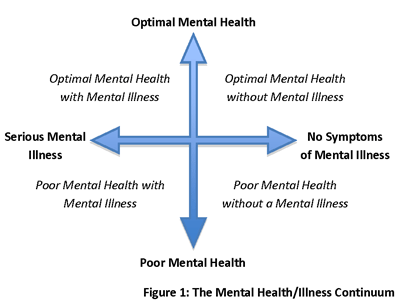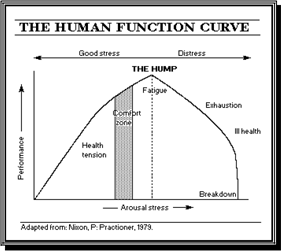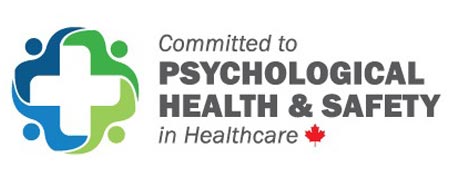There are many websites out there that outline ways to manage your stress. What they don’t provide on a regular basis are the tools and techniques required to Enact Change. To save you time in searching for resources, this Toolkit provides you with the American Psychological Association’s ‘Taking Steps to Manage Stress’ and with relevant links added for you to Take Charge of your mental health today.
Here are some steps you can take to manage your stress and improve your mental health:
Track your stressors. Keep a journal for a week or two to identify which situations create the most stress and how you respond to them. Record your thoughts, feelings, and information about the environment, including the people and circumstances involved, the physical setting, and how you reacted. Did you raise your voice? Get a snack from the vending machine? Go for a walk? Taking notes can help you find patterns among your stressors and your reactions to them. Here are different tracking mechanisms. Pick which one is best for you!
Develop healthy responses. Instead of attempting to fight stress with fast food or alcohol, do your best to make healthy choices when you feel the tension rise. Exercise is a great stress-buster. Yoga can be an excellent choice, but any form of physical activity is beneficial. Also make time for hobbies and favorite activities. Whether it’s reading a novel, going to concerts or playing games with your family, make sure to set aside time for the things that bring you pleasure. Getting enough good-quality sleep is also important for effective stress management. Build healthy sleep habits by limiting your caffeine intake late in the day and minimizing stimulating activities, such as computer and television use, at night.
Establish boundaries. In today’s digital world, it’s easy to feel pressure to be available 24 hours a day. Establish some work-life boundaries for yourself. That might mean making a rule not to check email from home in the evening, or not answering the phone during dinner. Although people have different preferences when it comes to how much they blend their work and home life, creating some clear boundaries between these realms can reduce the potential for work-life conflict and the stress that goes with it.
Take time to recharge. To avoid the negative effects of chronic stress and burnout, we need time to replenish and return to our pre-stress level of functioning. This recovery process requires “switching off” from work by having periods of time when you are neither engaging in work-related activities nor thinking about work. That’s why it’s critical that you disconnect from time to time, in a way that fits your needs and preferences. Don’t let your vacation days go to waste. When possible, take time off to relax and unwind, so you come back to work feeling reinvigorated and ready to perform at your best. When you’re not able to take time off, get a quick boost by turning off your smartphone and focusing your attention on non-work activities for a while.
Learn how to relax. Techniques such as meditation, deep breathing exercises and mindfulness (a state in which you actively observe present experiences and thoughts without judging them) can help melt away stress. Start by taking a few minutes each day to focus on simple activities like breathing, walking or enjoying a meal. The skill of being able to focus purposefully on a single activity without distraction will get stronger with practice and you’ll find that you can apply it to many different aspects of your life.
- HealthLinkBC’s Stress Management Techniques:
- Check out relaxation and meditation apps for your phone
Talk to your supervisor. Healthy employees are typically more productive, so your boss has an incentive to create a work environment that promotes employee well-being. Start by having an open conversation with your supervisor. The purpose of this isn’t to lay out a list of complaints, but rather to come up with an effective plan for managing the stressors you’ve identified, so you can perform at your best on the job. While some parts of the plan may be designed to help you improve your skills in areas such as time management, other elements might include identifying employer-sponsored wellness resources you can tap into, clarifying what’s expected of you, getting necessary resources or support from colleagues, enriching your job to include more challenging or meaningful tasks, or making changes to your physical workspace to make it more comfortable and reduce strain.
Get some support. Accepting help from trusted friends and family members can improve your ability to manage stress. Your employer may also have stress management resources available through an employee assistance program (EAP), including online information, available counselling, and referral to mental health professionals, if needed. If you continue to feel overwhelmed by work stress, you may want to talk to a psychologist or social worker, who can help you better manage stress and change unhealthy behavior.
 Mental health and mental illness are not mutually exclusive concepts. The Mental Health/Illness Continuum demonstrates this (Figure 1), suggesting that they are fluid with a person being able to move from one quadrant to another next depending on how life is treating them and how they are reacting to it at that moment.
Mental health and mental illness are not mutually exclusive concepts. The Mental Health/Illness Continuum demonstrates this (Figure 1), suggesting that they are fluid with a person being able to move from one quadrant to another next depending on how life is treating them and how they are reacting to it at that moment.



 As illustrated in Figure 2, there is a certain amount of stress (arousal) that when increased, makes us more productive. We experience a level of tension that supports us completing work under deadlines and respond to patients and physicians needing to know information quickly. There is a point, though, where we hit the ‘Hump’. This is the peak of our stress meter where productivity becomes less rewarding and we start to feel more uncomfortable. We need to make sure that we are looking for early warning symptoms and signs that suggest we are becoming overloaded, burnt out, or experiencing mental health issues.
As illustrated in Figure 2, there is a certain amount of stress (arousal) that when increased, makes us more productive. We experience a level of tension that supports us completing work under deadlines and respond to patients and physicians needing to know information quickly. There is a point, though, where we hit the ‘Hump’. This is the peak of our stress meter where productivity becomes less rewarding and we start to feel more uncomfortable. We need to make sure that we are looking for early warning symptoms and signs that suggest we are becoming overloaded, burnt out, or experiencing mental health issues.


